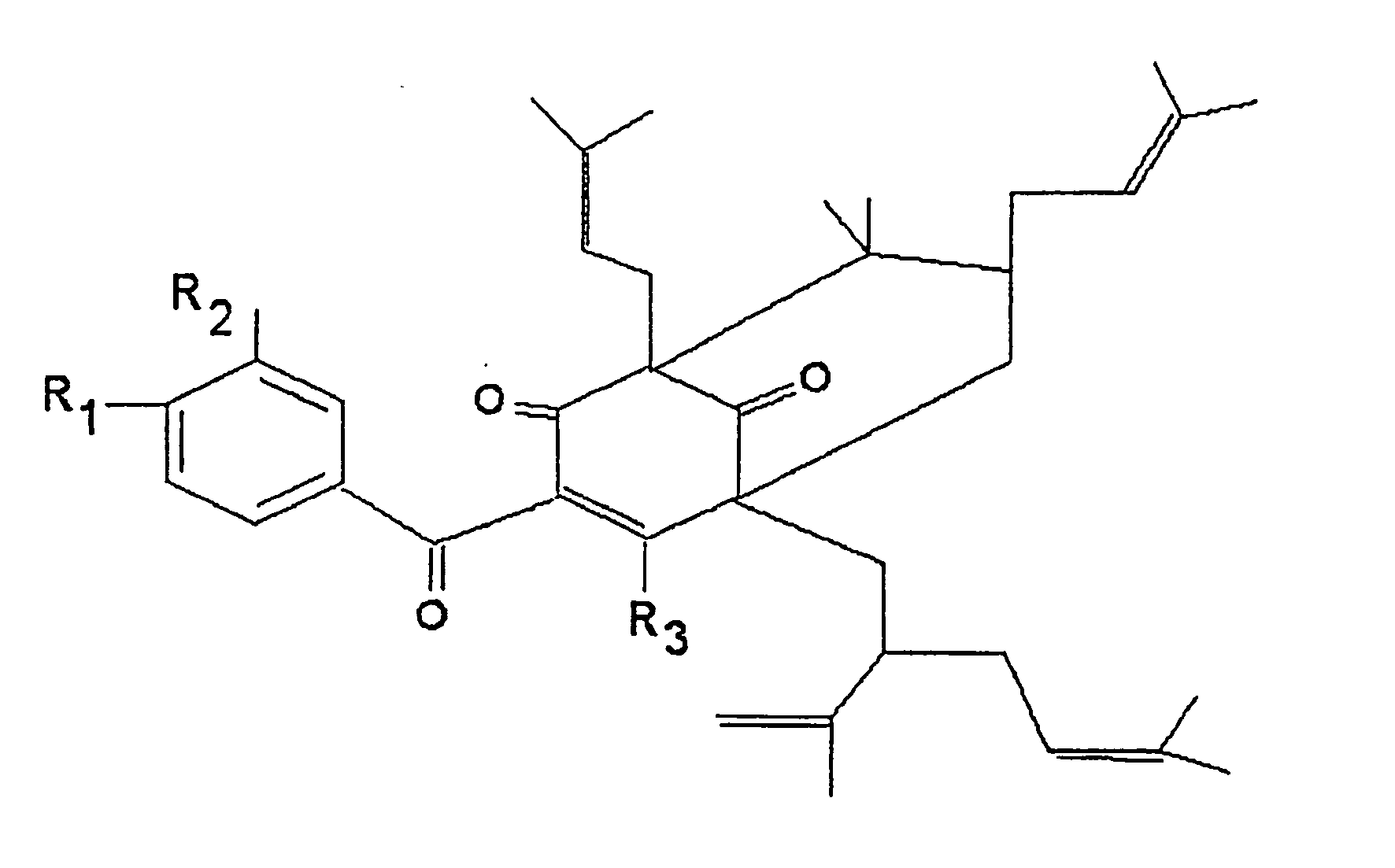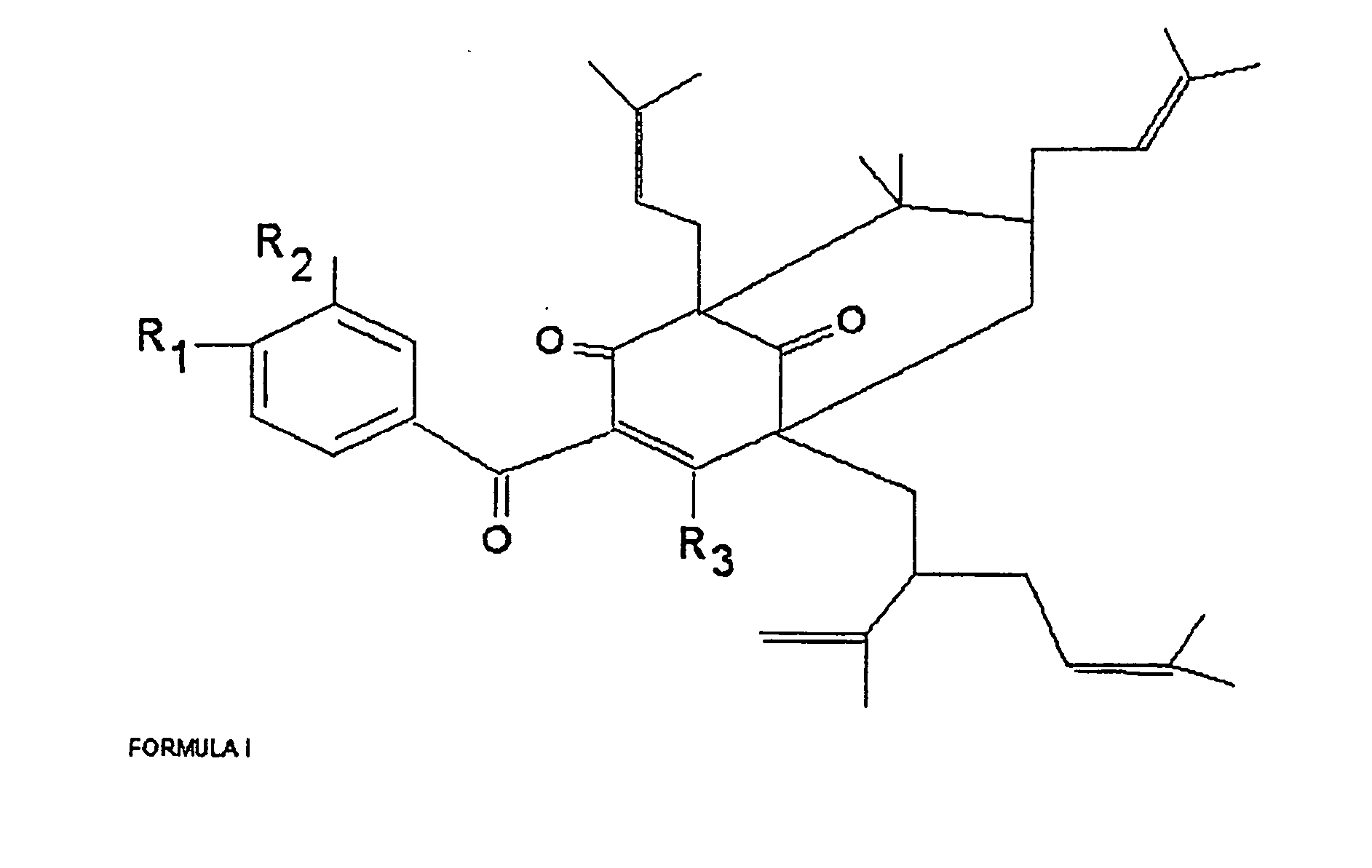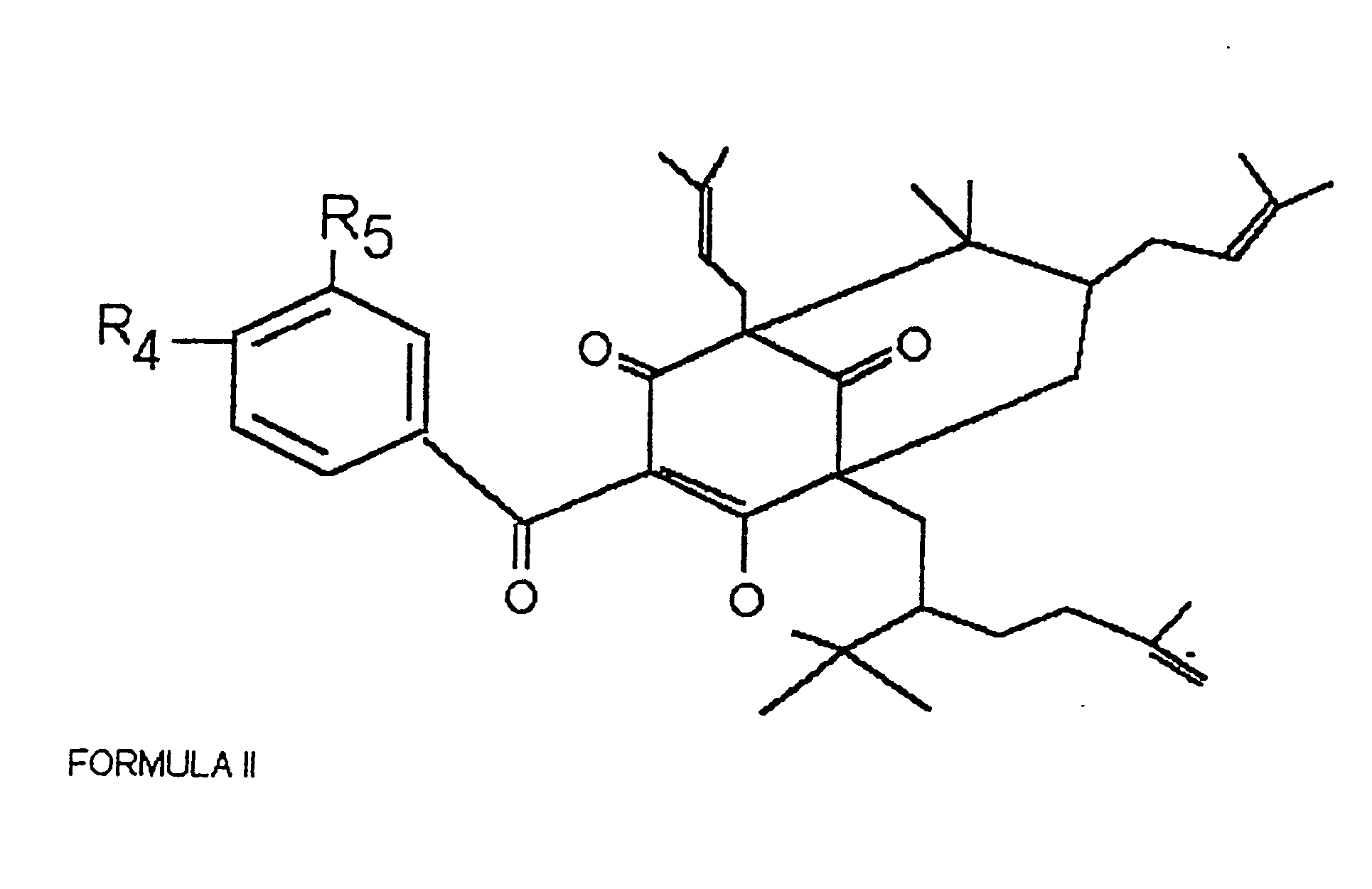Polyisoprenylated Benzophenones and Their Isomers as Inhibitors of Histone Acetyltransferases and Uses thereof
a technology of polyisoprenylated benzophenone and inhibitors, applied in the field of new anticancer drugs, can solve the problems of inhibitors that cannot penetrate the cells, inhibitors are not known, and the pharmacogenically poor effect of inhibitors
- Summary
- Abstract
- Description
- Claims
- Application Information
AI Technical Summary
Problems solved by technology
Method used
Image
Examples
example 1.0
Purification and Structural Analysis of Garcinol
[0006] Garcinol was prepared from Garcinia indica fruit rind (46). In brief, G. indica dried fruit (Kokum) rind was extracted with ethanol, and the extract was fractionated by ODS (octadecyl silica) column chromatography eluted stepwise with 60-80% aqueous ethanol. The fractions containing garcinol were concentrated and dried in vacuum. The residue was dissolved in hexane, and the solution was cooled at 5° C. for 2 days. Yellow amorphous precipitate was collected from the solution and washed with cold hexane and recrystallized at room temperature. Pale yellow needle crystals were obtained from the solvent, which were identified as garcinol from the following spectral data: mp 126° C.; Optical rotation at 30-135 (CHCl3); UV in EtOH (log ε) 367 (3.84) and 250 (4.05) nm; IR 3200-3500, 1730, 1640 cm−1; 1H NMR (CDCl3) δ 6.95 (1H, dd, J=9.0 and 2.0 Hz), 6.91 (1H, d, J=2.0 Hz), 6.60 (1H, d, J=9.0 Hz), 4.96, 5.06, 5.10 (1H each, t, J=5.0 Hz),...
example 2.0
Histone Acetyl Transferase (HAT) Assay
[0008] The protocol used for the HAT assays is described elsewhere (32). Indicated amounts of proteins (see the Figure legends) were incubated in HAT assay buffer containing 50 mM Tris-HCl, pH 8.0, 10% (v / v) glycerol, 1 mM dithiothreitol, 1 mM phenylmethylsulphonyl fluoride (PMSF), 0.1 mM EDTA pH 8.0, 10 mM sodium butyrate at 30° C. for 10 min in the presence and absence of garcinol followed by addition of 1 μl of 4.7 Ci / mmol [3H]-acetyl CoA and were further incubated for another 10 min. The final reaction volume was 30 μl. The reaction mixture was then blotted onto P-81 (Whatman) filter paper and radioactive counts were recorded on a Wallace 1409 liquid scintillation counter. To visualize radiolabeled acetylated histones, the reaction products were resolved on 15% SDS-polyacrylamide gel and subjected to fluorography followed by autoradiography as described earlier (32) For the kinetic analysis of garcinol-mediated inhibition of HATs, filter bi...
example 3.0
[0009] Deacetylation assay was performed as described previously (31), Briefly 2.4 μg of core histones were incubated in HAT buffer without NaBu, with 20 ng of p300 and 1 μl of 4.7 Ci / mmol [3H]-acetyl CoA for 30 min at 30° C. The activity of p300 was inhibited by incubating the reaction mixture with 10 nM p300 specific inhibitor Lysyl-CoA (29) for 15 min at 30° C., after which 50 ng of baculovirus expressed and purified recombinant histone deacetylase HDAC1 was added in the presence or absence of garcinol and incubated further for 45 min at 30° C. The samples were analysed as described above.
PUM
| Property | Measurement | Unit |
|---|---|---|
| Temperature | aaaaa | aaaaa |
| Concentration | aaaaa | aaaaa |
Abstract
Description
Claims
Application Information
 Login to View More
Login to View More - R&D
- Intellectual Property
- Life Sciences
- Materials
- Tech Scout
- Unparalleled Data Quality
- Higher Quality Content
- 60% Fewer Hallucinations
Browse by: Latest US Patents, China's latest patents, Technical Efficacy Thesaurus, Application Domain, Technology Topic, Popular Technical Reports.
© 2025 PatSnap. All rights reserved.Legal|Privacy policy|Modern Slavery Act Transparency Statement|Sitemap|About US| Contact US: help@patsnap.com



